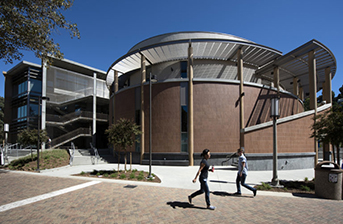[ Encourage and interact as a family]
The idea of encouraging the students should be highest priority of the parents. It's a new environment and they're not sure what's going on - it's important them to recognize that they have a loving family. It's also important to interact as a family in terms of learning English. Te entire family is going through a life-altering transition and it will be much easier for everyone to be able to relate to one another.
Try to speak more English at home or maybe have a night or two out of the week where the entire family will sit together to play games (in English!). This kind of interactions is just what you would expect from normal families - don't change up the dynamics of your family. It has been enough of a change moving to a new country and stability is an important issue.
If it’s been a while since you were in college, the rules are changing: Students may now be required to talk to each other, check their cellphones or trade notes. Professors often no longer lecture from a podium.
It’s all part of active learning, which flips traditional education on its head to maximize collaboration.
The state’s first building entirely devoted to active learning will open Sept. 25 at the University of California, Irvine. The Anteater Learning Pavilion adds much-needed classroom space to the fast-growing campus – and is wired for 21st-century education.
“The heart of everything that UCI does is to help all our students learn and flourish,” said Chancellor Howard Gillman. “This magnificent facility will do just that for generations to come.”
The 65,000-plus-square-foot structure features flexible furniture, multiple writing surfaces and wireless projection to optimize active learning. In 15 smart classrooms and auditoriums, old-school audiovisual equipment has been replaced by sleek computer screens on every wall and desk. Each can be linked to from laptop or mobile devices. Seats swivel for group exercises.

In abnormal psychology courses, for example, teams of students use brain imaging to explore schizophrenia. In American history, they create an online frontier town from the 1800s. And in science communications, they calculate how many elephants it would take to raise sea levels, compared to glacier melt.
“Many of our faculty no longer expect – or want – students to simply listen to lectures, take notes and memorize facts,” said Michael Dennin, vice provost for teaching and learning. “In order for our students to be prepared for a complicated and competitive world, they have to be ready to understand and demonstrate processes, analyze arguments and apply what they’ve learned to real-world situations.”
Attendees at the official opening can experience active learning too – including wireless exercises, group quizzes and digital storytelling – via iClickers, Canvas and additional tools.
Research shows that such engaged learning can help undergraduates – particularly first-generation and those belonging to underrepresented minorities – retain knowledge better, earn higher grades and gain lifelong skills.
While active learning programs elsewhere largely focus on science and engineering, UCI’s spans multiple disciplines – from dance, history and language to neurobiology, psychology, chemistry and more.
The only other campus building wholly devoted to active learning is at Oregon State University, and a handful of colleges across the U.S. have numerous classrooms. UCI’s $67 million complex was constructed with $62 million in external funds and $5 million from campus coffers.
To receive priority to teach in the new building, instructors are required to complete an eight-week certification program on active learning techniques and technologies.
Demand for the training is high: Hundreds are on a waiting list.